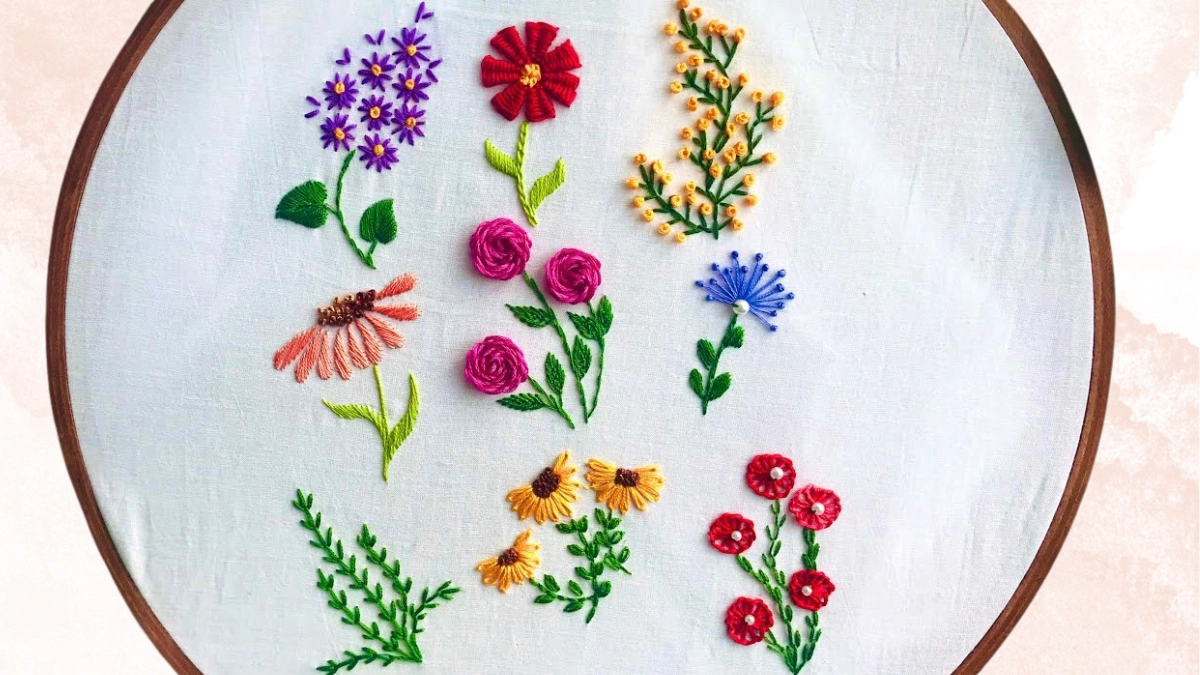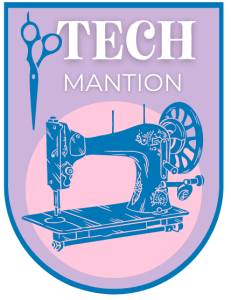Do your Converse shoes feel like they’re missing a touch of your personality?
Embroidery can be the perfect solution, adding a splash of color and a dash of individuality to your beloved kicks. Embroidering flowers on Converse shoes might seem daunting, but it’s an achievable craft that can bring your creative vision to life.
In this comprehensive guide, we’ll walk you through the process of how to embroider flowers on Converse shoes, ensuring that even novices can embrace this trend with confidence. Join us as we turn the ordinary into extraordinary, one stitch at a time.
Table of Contents
- 1 Embroidery Shoes
- 2 Gathering Materials
- 3 Designing Floral Embroidery
- 4 Embroidery Techniques for Flowers
- 5 Embroidering on Canvas Material
- 6 Step-by-Step Guide on How to Embroider Flowers on Converse Shoes
- 7 Finishing Touches
- 8 Embroidery on Different Shoes
- 9 Care and Maintenance for Embroidered Shoes
- 10 FAQs on how to embroider flowers on Converse shoes
- 11 Final Thoughts
Embroidery Shoes
Embroidering on shoes, particularly sneakers such as Converse transforms an ordinary pair into unique, personalized footwear. This section outlines the essentials of shoe embroidery, including the differences between sneakers and shoes, techniques for hand embroidery, and the appropriate needles to use.
What is the difference between sneakers and shoes?
Sneakers are designed for comfort and sports, while shoes encompass a broader range of footwear suitable for various occasions. Sneakers, like Converse, typically feature a canvas or synthetic upper and a flexible rubber sole, making them ideal candidates for embroidery due to their durable yet forgiving material.
Hand embroidery on shoes
Hand embroidery on shoes allows for intricate and bespoke designs that machines cannot always replicate. To embroider successfully on a shoe like Converse, one must prepare the surface by creating a stable foundation, often using an embroidery hoop to hold the fabric taut and maintain consistent tension throughout the work.
What needle do you use to embroider shoes?
The needle choice is crucial when embroidering on shoes:
- Sharp Needles: Ideal for piercing through tougher materials without damaging the canvas.
- Embroidery Needles (size 3-9): These have larger eyes and are easily used for threading embroidery floss or thread.
One must select a needle that can handle the shoe’s fabric while accommodating the thread thickness for optimal results.
Gathering Materials
Embroidering flowers on Converse shoes transforms them into a personalized fashion statement. The right materials ensure a smooth process and vibrant results. An organized workspace helps streamline the embroidery process, resulting in a more enjoyable experience and a beautifully finished product.
Keep all tools within reach before starting. This includes:
- A pair of Converse shoes
- Scissors: A sharp pair for cutting thread.
- Embroidery Floss
- Hoop: To stabilize the shoe during work.
- Embroidery Needle (size 3-9)
- Water-soluble marker: For transferring a design onto the canvas.
- A Thimble
- Needle Puller
- Thread conditioner or beeswax: To reduce thread tangling.
- A floral design
Choosing Threads and Colors
Embroidery threads come in various fibers like cotton, silk, and rayon. One must select high-quality embroidery threads to ensure the color vibrancy and durability of the design. Colors should complement or contrast the shoe color for visual impact.
Selecting Embroidery Needles
Needles specific to embroidery are essential. They should be sharp and of appropriate size to navigate the shoe’s fabric. For Converse shoes, a medium-sized needle often works best to pierce through the canvas without causing damage.
Read our full article on embroidery needle sizes for more insights.
Preparing the Converse Shoes for Embroidery
One should begin by removing the laces and cleaning the surface. A tight embroidery hoop helps stretch the canvas for a stable embroidery surface. Placing interfacing inside the shoe provides additional support during the stitching process.
Designing Floral Embroidery
Before embroidering flowers on Converse shoes, one must consider pattern creation and transfer, as well as the selection of appropriate flower types for the desired look. These steps are critical in achieving a cohesive and beautiful design.
Creating Floral Patterns and Transferring
When creating floral patterns, it’s essential to tailor the design to the unique canvas that Converse shoes offer. Artists can draw inspiration directly or use various resources such as embroidery books or online tutorials for custom patterns.
Once the design is finalized, transferring it onto the shoe requires precision. One can use a dressmaker’s carbon paper or a water-soluble pen to transfer the pattern onto the fabric. This ensures that the embroidery follows the intended design accurately.
Read our full article on transferring pattern to fabric to get more insights.
Identifying Flower Types for Embroidery
Choosing the right flower types for embroidery can profoundly affect the visual appeal of the shoes. Simple flowers like daisies or tulips can be ideal for beginners, while more intricate designs, such as roses or peonies, may suit experienced embroiderers.
Each flower type brings its own set of stitches and techniques, which are well-documented in embroidery guides like those found at Henri Purnell’s tutorial or described in project walk through like the ones at Gathered. It’s crucial to consider the flower’s shape, size, and level of detail to ensure that they complement the shoe’s style and structure.
Embroidery Techniques for Flowers
When embroidering flowers on Converse shoes, the right techniques are crucial for creating a vibrant and durable design. This section explores specific stitches and methods to enhance floral embroidery.

Stitch Types for Floral Embroidery
- Backstitch: Ideal for outlines and fine details.
- French Knot: Perfect for creating the center of flowers or small accents.
- Satin Stitch: Used to fill in larger petal and leaf areas with solid color.
Stitching Petals and Leaves
For petals:
- Use the Satin Stitch for a smooth, solid appearance.
- Ensure stitches are close together to avoid gaps.
For leaves:
- Fishbone Stitch works well for a veined look.
- Angle stitches towards the central vein for a realistic effect.
Adding Dimension to Floral Embroidery
- Layering: Incorporate various shades of color to give depth.
- Texture: Combine stitches like the French Knot and Bullion Knot to create a raised effect on certain flower parts.
Embroidery on shoes like Converse can transform them into custom pieces of art. Using these techniques will help to ensure the flowers have the desired appearance and texture.
Embroidering on Canvas Material
When embroidering on canvas, the two main factors to consider are how to effectively secure the fabric and how to adjust the tension when working with a material that’s thicker than typical embroidery fabrics.
Securing the Fabric in a Hoop
One must ensure the canvas shoe is firmly held in place to create precise stitches. This can be accomplished by using an embroidery hoop. The hoop should be small enough to fit the area being embroidered but large enough to keep the fabric taut. To begin:
- Loosen the screw on the embroidery hoop.
- Place the smaller inner ring inside the shoe, beneath the area to be embroidered.
- Stretch the canvas over the inner ring, then press the outer hoop over the fabric and inner ring.
- Tighten the hoop’s screw to secure the fabric without overstretching it.
Adjusting Tension for Thick Fabrics
Canvas, being a thicker fabric, necessitates careful tension adjustment during embroidery. Here’s how to manage tension effectively:
- Use a thicker needle, such as a heavy-duty embroidery needle, to handle the canvas’s weight without breaking.
- Select embroidery floss suitable for canvas; a thicker floss withstands the fabric’s coarseness while allowing for distinct, visible stitches.
- Adjust the tension by pulling the floss through slowly and with consistent force, ensuring that each stitch is tight enough to sit flush against the canvas but not so tight that it puckers the material.
Step-by-Step Guide on How to Embroider Flowers on Converse Shoes
Step 1: Outline the non-stitchable semicircle on each shoe to avoid stitching in that area.
Step 2: Flip the provided embroidery template for the left shoe and transfer the design onto both shoes using a heat-erasable pen, transfer paper, or iron-on pencil.
Step 3: Embroider the stems with Split Stitch in dark and light green, then add leaves with Straight Stitches.
Step 4: Create flower centers with French Knots or Satin Stitch in yellow and orange, and add buds with dark pink and yellow knots. Make daisy petals with Straight Stitches in light pink.
Step 5: Fill the middle flowers with Straight Stitches in yellow or blue.
Step 6: On the inner shoe, work the smaller design’s stems with Split Stitch and leaves with Straight Stitches in greens. Add French Knots in blue, pink, and yellow around the logo.
Step 7: Erase any visible lines with a hairdryer, iron, or damp cloth, or cover them with additional stitches.
Step 8: Secure thread ends inside the shoe by weaving through existing stitches.
Finishing Touches
The final steps involve securing the embroidery and ensuring the design remains intact during wear. These details are crucial for the longevity of your custom Converse shoes.
Knotting and Trimming Threads
After completing the embroidery, one must secure the stitches to prevent unraveling. They can achieve this by knotting the threads on the reverse side of the fabric.
It’s essential to make the knots tight and close to the fabric’s surface to maintain a flat inside, which is more comfortable to wear. Following the knotting, trim the excess threads with sharp scissors as close to the knots as possible without cutting them. This helps to keep the work clean and tidy.
Protecting Embroidered Areas
To protect the embroidered flowers from wear and damage, apply a thin layer of clear fabric sealant over the stitches. They must do this carefully to avoid stiffening the shoe’s fabric.
Another method is to use iron-on interfacing on the inside of the shoe, behind the embroidery, which provides additional support to the stitches. They must ensure the interfacing is properly adhered to avoid discomfort when wearing the shoes.
Embroidery on Different Shoes
Embroidering shoes add a personalized touch and different materials require specific techniques. This section discusses various methods to embroider flowers on different types of shoes such as tennis shoes, canvas shoes, leather shoes, and boots.

How to embroider flowers on tennis shoes
To embroider on tennis shoes, one will need a sturdy needle and embroidery floss. They should create a sketch of the flower design they plan to embroider. Using an embroidery hoop is optional but can help maintain tension on the fabric as they stitch.
How do you hand embroider on canvas shoes?
Embroidering on canvas shoes by hand involves using a technique similar to stitching on fabric. The crafter should use a pencil or fabric marker to outline the design directly onto the shoe. A sharp embroidery needle and embroidery thread are essential to ensure the needle can pierce the thick canvas material.
How to embroider leather shoes?
Leather shoe embroidery requires a different approach due to the toughness of the material. Pre-punching the holes with an awl and using a thicker needle and strong polyester or nylon thread is advisable. The embroiderer must be careful not to tear the leather and should consider using a leather thimble to protect their fingers.
Can you embroider on boots?
Boots, particularly those made of softer materials like suede, can be embroidered. The embroiderer should select an appropriate needle for the material, with curved needles often being beneficial for harder-to-reach places. Patience is key, as the thickness and shape of boots can pose a challenge when stitching.
Care and Maintenance for Embroidered Shoes
Proper care and maintenance preserve the appearance and longevity of embroidered Converse shoes. These guidelines ensure that the intricate designs remain vibrant and intact.
Cleaning Embroidered Footwear
To clean embroidered areas on Converse shoes, one should use a soft-bristled brush to gently remove surface dirt. A damp cloth can be used to blot stains, being careful not to rub aggressively as this could damage the embroidery threads.
For a deeper clean, it is advised to mix a small amount of mild detergent with water and to apply this solution sparingly with the cloth. Allow the shoes to air dry away from direct heat or sunlight.
Storing Embroidered Converse
When storing embroidered Converse, it is crucial to keep them in a cool, dry place to prevent mold or mildew growth. Stuffing the shoes with acid-free tissue paper helps to maintain their shape and prevent creasing.
Avoid stacking shoes on top of one another, as the weight can crush the embroidery and distort the shoe’s structure. If possible, store the shoes in a fabric shoe bag to protect the embroidery from dust and other environmental factors.
Learn how to embroider flowers on crochet from our insightful article.
FAQs on how to embroider flowers on Converse shoes
Can you add a logo to Converse?
Yes, you can add a custom logo to Converse shoes through embroidery or special printing techniques, allowing you to personalize them to your taste.
Was it difficult getting your hand inside the shoe for the stitches deep inside?
It can be challenging to reach deep inside the shoe for embroidery, but using a smaller hoop or flexible needle can make the process easier.
Can you embroider on canvas sneakers?
Yes, you can embroider on canvas sneakers, including Converse, as the material holds stitches well, but it’s important to use the right needle and stabilizer for a clean finish.
Final Thoughts
Embroidering flowers on your Converse shoes is a rewarding way to express your creativity and add a personal touch to your wardrobe. With the steps outlined in this guide, you now know how to transform a simple pair of sneakers into a bespoke fashion statement. So grab your needle and thread, and let your imagination bloom with each stitch you make.
Remember, the beauty of DIY is in the details, and your newly embroidered Converse is sure to turn heads and inspire others to get crafty with their kicks.








